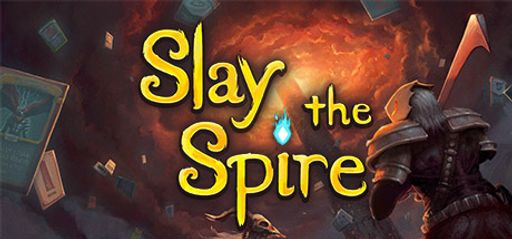I recently embarked on a journey into the spiraling depths of Mega Crit’s acclaimed creation, Slay the Spire. I take pride in leaving no stone unturned, and this game has consistently rewarded that persistence. With its unique fusion of card games and roguelikes, Slay the Spire captured my attention early on. Today, I share my detailed impressions after spending many hours both strategically assembling decks and exploring every nook and cranny its layers offer.
Overall Impressions
Slay the Spire is now a benchmark for deckbuilder roguelikes and has inspired many imitators. I’ve tried several similar games, but none match its balance of strategy and chance. The goal is simple yet deep: build a deck, face strange foes, collect powerful relics, and climb an ever-changing spire. Both new and veteran players have praised it, and I agree. Despite the usual roguelike frustrations, each run teaches you new lessons in choices and persistence. Compared to its peers, Slay the Spire stands out by offering fresh challenges every time you start a climb.
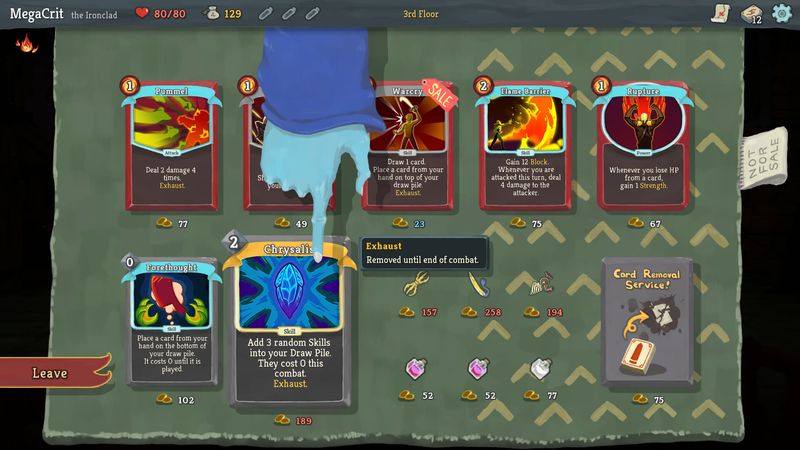
Gameplay Mechanics
The core loop in Slay the Spire is deck building, turn‑based battles, and risk‑reward choices at each floor. First, you shape your deck—a process I find very satisfying. Next, you test card and relic synergies in fights that feel like chess matches. The mechanics seem simple but hide deep tactics. Thoughtfully designed encounters force you to adapt on the fly.
However, randomness can sometimes feel unfair. Yet these frustrating moments often teach you more about the system. For example, some players have shared that finally beating the Silent on mobile felt like a real achievement. Plus, the active modding community keeps adding new content. In short, the card‑based combat is rewarding, though it demands both strategy and repeated play.
Story and Characters
While Slay the Spire does not rely on an elaborate narrative, its minimalist storytelling works wonders in enhancing gameplay. The game introduces you to a world filled with mythic, mysterious elements rather than fully fleshed-out characters. I appreciate the lore that unfolds as you progress, where every relic and enemy tells a story. The narrative is a subtle guide that complements rather than dominates the experience. Throughout my playthroughs, I found that the sparse storytelling increased the intrigue behind each decision and battle.
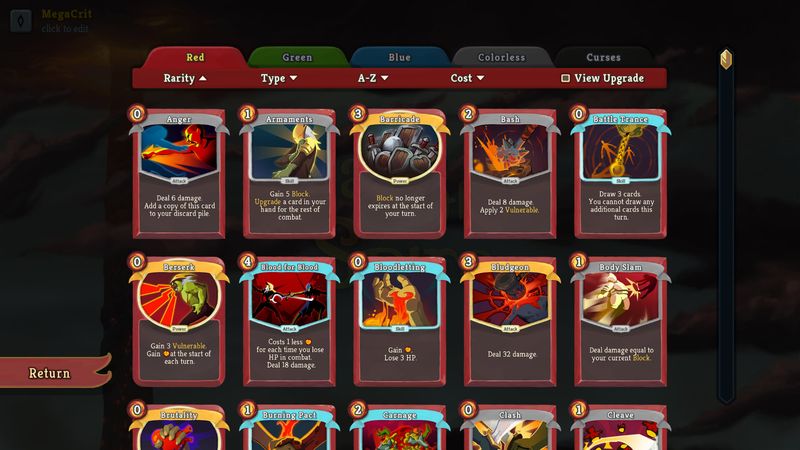
This understated narrative approach is its strength. Instead of heavy-handed dialogue or cutscenes, the environment and relic descriptions are rich with hints and backstory. Fans of the genre applaud this design decision, and I found it proved to be a compelling method of world-building. In addition, the character dynamics—although minimal—encourage personal interpretation and immersion. Every run becomes a personal odyssey filled with moments of triumph and surprising twists.
Visuals and Graphics
The art style of Slay the Spire is a celebration of simplicity and inventiveness. The graphics are deliberately minimalist, yet every element feels hand-crafted with care. The design of the spire itself is both mysterious and inviting. I admired how each floor offered a distinct visual theme that adapted seamlessly to the game’s mood. The creatures and bosses are both eerie and fascinating, leaving a memorable impact on the player. In graphical terms, the game’s visuals work in harmony with its game design, reinforcing the strategic and ever-changing nature of the journey.
Every card features its illustration, and the artwork, though not overly elaborate, accomplishes a lot with subtle details and clever design choices. This visual design contributes significantly to the game’s atmosphere while maintaining a style that is both modern and timeless.
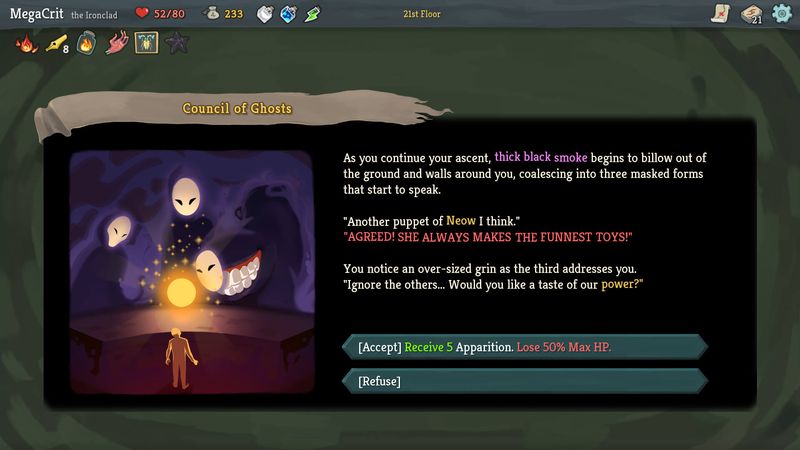
Sound and Music
Accompanying the visual finesse is an equally compelling soundscape. The soundtrack is composed in a way that shifts smoothly between moments of quiet introspection and the crescendo of battle. The ambient sounds of the spire add weight to each step you take, while the music during encounters increases the tension to almost palpable levels. I found that the carefully crafted sound effects enhance both the combat and the exploration aspects of the game.
The sound design in Slay the Spire contributes essential layers to its overall atmosphere. Whether you are drawing a card, activating a relic, or engaging in combat, each audio cue is perfectly timed. The lack of distracting voice work keeps the focus on the strategic actions you need to perform. For me, these insights and auditory choices solidify Slay the Spire as a masterclass in creating an immersive, multi-sensory gaming experience.
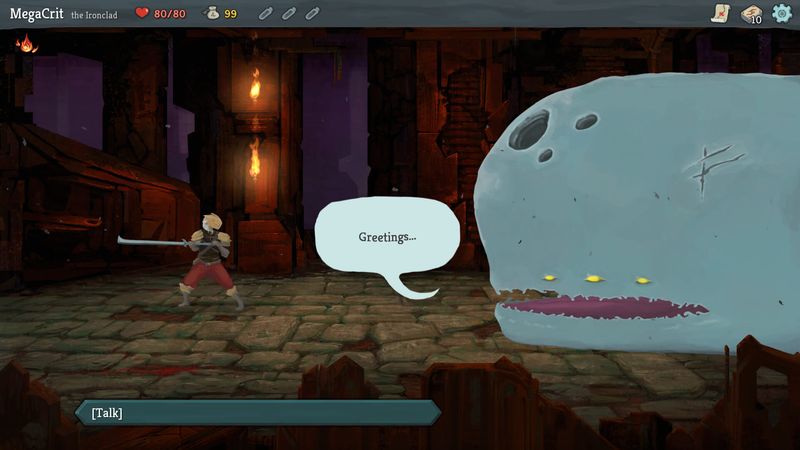
Difficulty and Replayability
One of the factors that stands out for Slay the Spire is its considerable challenge and high replayability. The difficulty level is precisely calibrated. Every attempt presents a new puzzle that calls for tactical innovation and adaptation. This is particularly appealing to completionists—each run, regardless of its outcome, brings an opportunity to discover new card synergies, secret paths, and combinations that I had not considered before.
The roguelike aspect ensures that no two runs are identical. I found the unpredictability of encounters both exhilarating and humbling. Players who comment on their progress, such as “I’ll update this whenever I actually get past the second area,” capture the fuel that drives you to persist despite setbacks. In my experience, both early and advanced players are rewarded with satisfying victories that are hard-won yet profoundly gratifying. Ultimately, this high replayability is what sets the title apart from its peers. Whether you are a casual gamer or a serious strategist, every climb of the spire poses a fresh and worthwhile challenge.
Conclusion and Rating
After extensive exploration and analysis, I can firmly state that Slay the Spire is more than a game—it is a refined art form that has redefined the deckbuilding roguelike genre. Its engaging mechanics, minimalistic storytelling, tasteful visuals, and immersive sound design create an experience that is both challenging and endlessly rewarding.
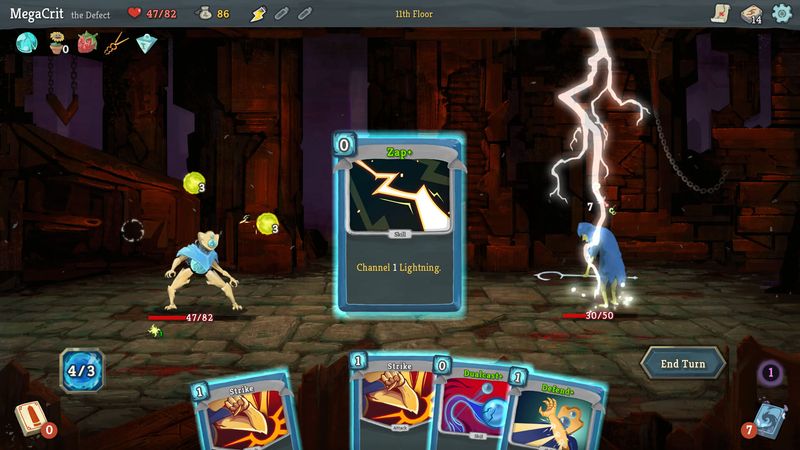
What struck me most was the perfect balance between randomness and strategy. Minor frustrations are short-lived compared to the satisfaction of discovering a new tactic or overcoming a previously insurmountable challenge. Compared to many of its peers, Slay the Spire remains at the forefront, continuously inspiring a devoted community and inviting new players with each update and mod.
For these reasons, I give Slay the Spire a solid 5 out of 5 stars. The game invites players to explore every aspect of its design, satisfying both those who play for quick victories and the most dedicated completionists. Every climb of the Spire is a reminder of why I, as CompletionistMaster, relish games that reward thoughtful strategy and relentless exploration. I look forward to the eventual arrival of Slay the Spire 2, knowing that the original has carved an indelible mark on the genre for years to come.

